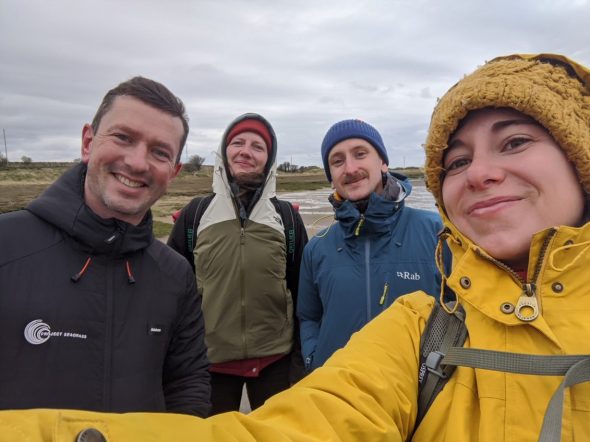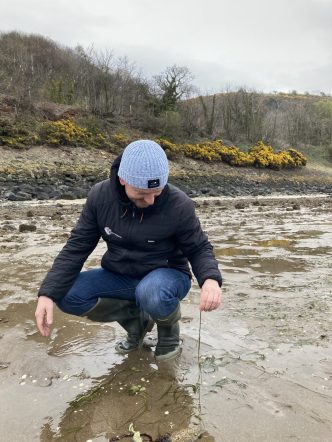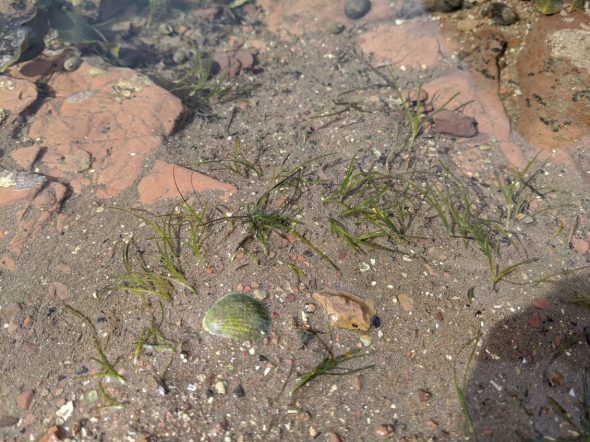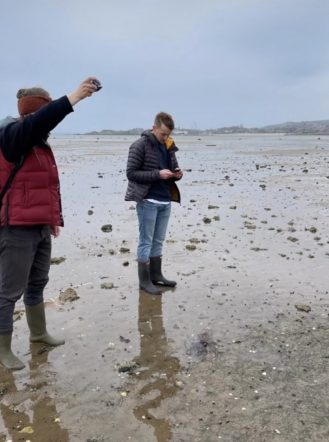
Let me introduce myself. My name is Lyle Boyle and I was a member of CCN a few years ago when I served as a Marine Ranger with the Berwickshire Marine Reserve. I have now joined the Ecology Centre as one of the two Seagrass Officers associated with the Restoration Forth Project. I am joined by Marie Seraphim, who is based over at the Scottish Seabird Centre in North Berwick.
The Restoration Forth Project is a £2.4 million project aimed at restoring 4 hectares of seagrass and 30,000 native oysters within the Firth of Forth over the next three years. The project was conceived in order to restore native habitats, to help meet climate objectives set by the UK and to connect local people to the sea. The project will be managed by WWF, however it will be facilitated by a partnership of scientists, charities and community groups.
To get you up to speed with where Marie and I are, so far we have met with our respective colleagues at Project Seagrass (RJ and Ester), who will be working closely with us over the next few years to deliver on the project’s seagrass objectives. RJ is CEO of Project Seagrass, and Ester has recently joined as Operations Lead for Scotland. It is great to have the team all in position now, as this signifies the start of the journey which has been so long in the making.

In April, the team met in person and took a trip to the community hubs and potential seagrass restoration sites along the Lothian side of the Forth. We made stops at Aberlady Bay and Tyninghame beach, as both beaches were identified as potential restoration sites. The two locations are semi-enclosed bays, which offer greater protection from wave action and coastal processes. The nature of these two bays should aid any potential restoration programme due to the local conditions. When this project was being formulated, lockdown was in full swing and as a result RJ was not able to visit the sites, so inferences were made on where seagrass was thought to exist. Fortunately, we were able to ground truth RJ’s predictions and located seagrass patches on the two beaches. We were able to identify both species of eelgrass (Zostera marina & Z. noltii) found in the UK, however with a greater presence of Z. notlii than Z. marina. We typically found seagrass in the intertidal part of the shore where conditions better suit the growth of Z. notlii, being able to endure longer periods of exposure and desiccation than Z. marina.

The presence of seagrass was received with encouragement, as this hopefully indicates that the environmental and biophysical conditions are capable of supporting seagrass beds. Early last week, RJ, Ester and I visited Pettycur Bay, over on the Fife side of the Forth and combed the bay in search of seagrass, which we found more of than we initially expected. Again, more encouragement to take from our first outing. This site offers great potential as it hosts a patchy network of seagrass over a 5 hectare area, with some areas supporting high densities of Zostera noltii. Pettycur Bay is ideally situated, being only a few minutes’ drive from the Ecology Centre. RJ, Ester and I are eager to use Pettycur Bay as one of the sites to trial the different planting techniques, due to its favourable location and the extent of seagrass. The accessibility to the site is fantastic. If we go forward with trails I will be able to keep an eye on our survey work with relative ease.

I will be venturing out soon in search of more seagrass at Inverkeithing, Dalgety and Aberdour to assess their potential as further restoration sites. Hopefully we have plenty of locations available for our restoration work.
Marie and myself will visit the folk at Seawilding next month where we will be all eyes and ears, absorbing as much as we can, so that we can come back and hit the ground running with our own restoration work.
Stay tuned for more developments. I’ll keep posting on the Ecology Centre’s social media accounts (@TheEcology_1) and Marie will be doing the same on the Scottish Seabird Centre’s (@SeabirdCentre), so do follow our restoration adventure!
Tags: Community, Restoration, Seagrass